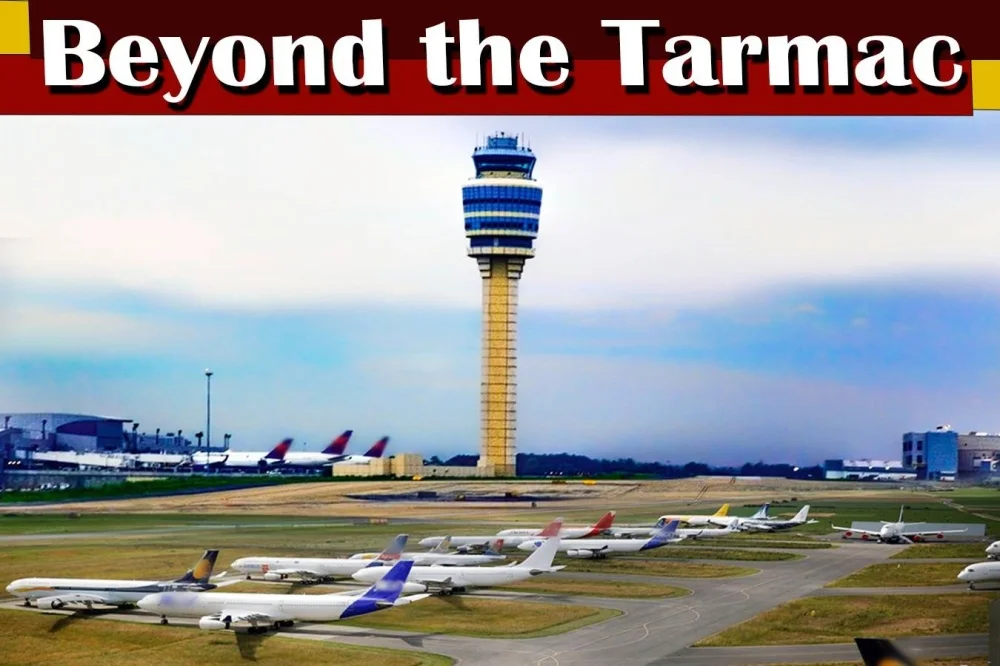
Smoke spreading from wildfires in Canada delayed hundreds of flights recently at New York’s LaGuardia Airport, New Jersey’s Newark Liberty International Airport and Philadelphia International Airport because of limited visibility.
The US Federal Aviation Administration (FAA) said in an update that it will likely need to take steps to manage the flow of air traffic into Washington, DC, and Charlotte as well.
And as the winds shift, federal aviation officials are warning smoky skies could be seen in the US Midwest and as far as the southeast.
Wildfire smoke causes more flight delays than rain or fog, according to FAA spokesman Kevin Morris.
Safety experts say when aircraft need to land during periods of poor visibility, they rely on advanced navigation systems both onboard the aircraft and on the ground.
Smoke from wildfires have a significant impact on air travel, affecting both the safety and efficiency of flights.
They result in reduced visibility, flight diversions and cancellations.
Obviously, smoke reduce visibility by creating a haze in the air, making it difficult for pilots to see landmarks, runways, or other aircraft. Reduced visibility poses a safety risk, especially during takeoff, landing, and taxiing.
Smoke can also affect airport operations, such as air traffic control systems and ground services.
"Commercial airliners fly through mild and moderate smoke without problems in most cases," aerospace engineer Ben Frank, the founder of aircraft maintenance software company Rotabull, told TripSavvy. "However, volcanic ash or very thick smoke can cause visibility and air quality issues, in addition to degrading jet engine performance."
It all boils down to the composition of smoke. "Smoke from wildfire contains different compounds such as carbon monoxide, volatile organic compounds, carbon dioxide, hydrocarbons, and nitrogen oxides, which are far from the hazard of volcanic ashes," noted José Godoy, CEO of flight operations company Simpfly.
"Volcanic ashes are made up of tiny fragments of rock, minerals, and volcanic glass, which are hard and abrasive.”
So while smoke typically gets pulled through a jet engine without a problem, the particles of volcanic ash can damage different surfaces of an aircraft.
That’s why air traffic in Europe was halted during the 2010 eruption of Eyjafjallajökull in Iceland, but the majority of air traffic on the West Coast, other than the brief hiatus by Alaska (which was more for the health of ground crews than the planes themselves), has mostly continued as usual.
Smoke from wildfires contains various pollutants, including particulate matter, ash, and harmful gases. These pollutants can have adverse effects on air quality, potentially leading to respiratory issues and other health concerns for passengers, crew, and airport personnel.
Airlines and airports prioritise the well-being of individuals and may adjust operations accordingly.
However, most modern aircraft now are equipped with modern high efficiency particulate air (HEPA) filters, which theoretically can remove at least 99.97% of dust, pollen, mold, bacteria, and any airborne particles with a size of 0.3 microns.
These are the same type of filters used in hospitals around the world.
So, one need not necessarily worry about smoke entering the cabin as one if flying through it, even though one might smell it.
Cabin air, experts say is a roughly 50-50 mix of recirculated and outside air. The recirculated air passes through a highly-engineered filtration system, and turns over every few minutes.
That said, smoke introduce airborne hazards such as ash particles into the atmosphere. These particles can be damaging to aircraft engines, leading to decreased performance or even engine failure. Consequently, airlines and aviation authorities closely monitor air quality and take precautions to protect aircraft from potential damage.




